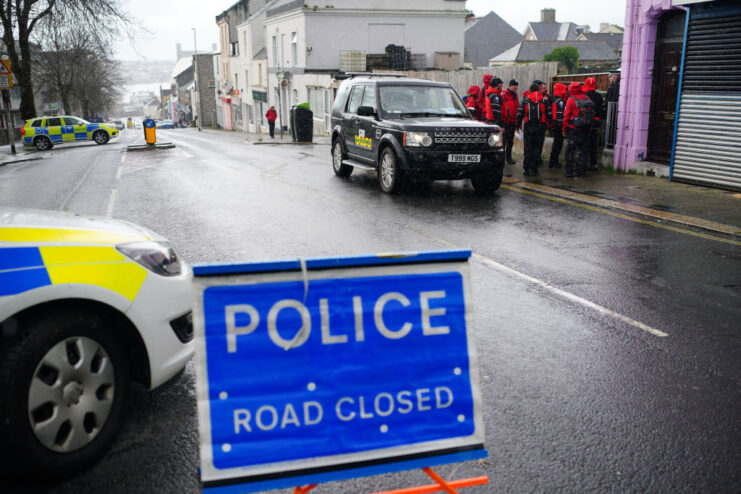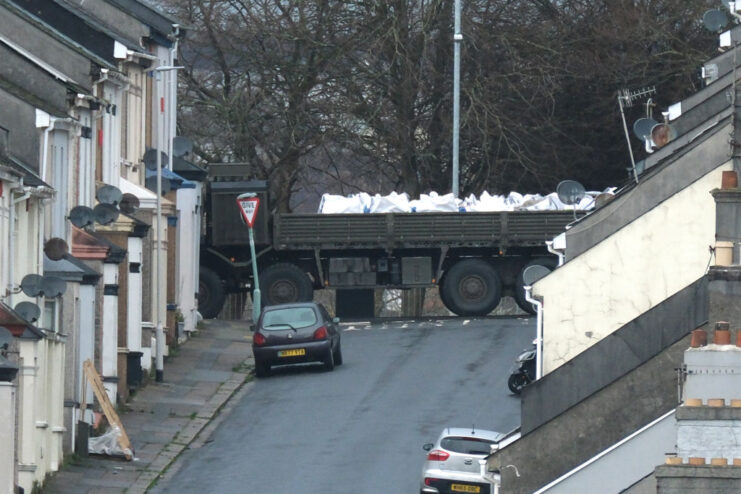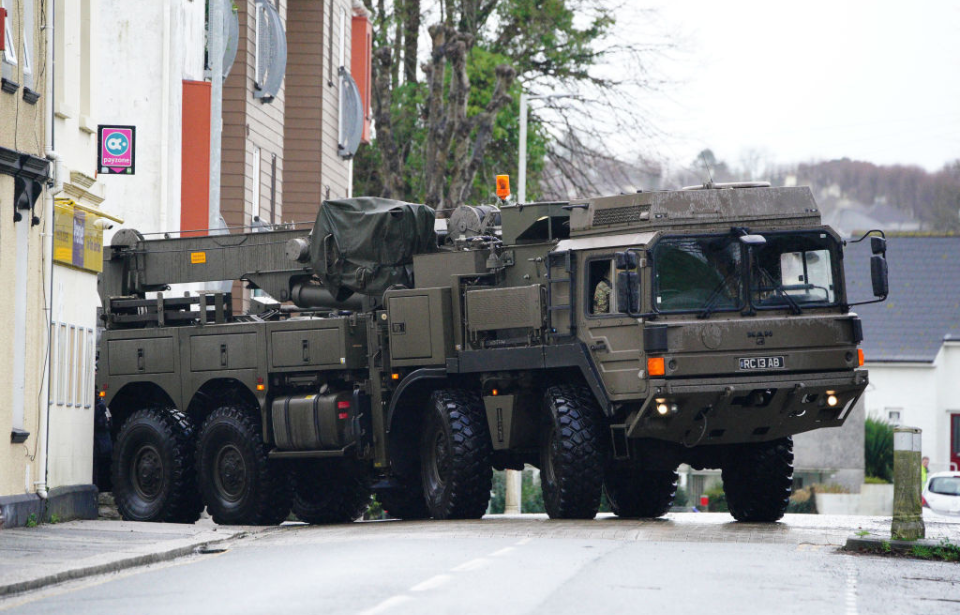Thousands of residents were forced to evacuate after a father working in his daughter’s garden in Plymouth uncovered a bomb dating back to World War II. The unexploded munition was safely removed and detonated at sea, leaving those from the town with an interesting tale to tell their friends and relatives.

The World War II-era bomb, which weighed approximately 500 kg, was uncovered while Ian Jary was digging in his daughter’s back garden on St. Michael Avenue, in Plymouth. Speaking with The Daily Mail, the 57-year-old recalled the moment he hit the munition “with his spade” while he was digging for hard ground during work on a house extension.
“We actually found it about a week ago. It was just outside the building line and the building inspector said we needed [a] trench of around 650mm,” he told the publication. “I hit something with a spade but we weren’t sure what it was at first.
“Since then we’ve had so much rain, the bank collapsed, then there was way more rain on Friday and it’s been revealed more and more,” he continued. “It’s about one metre long and half a metre in diameter. We’ve found a cap and a round circle threat sheared off or broke off.
“By this point my wife said we really should just call the police and alert them.”
NEW: Latest picture of the Plymouth bomb, via resident Olivia Elliott pic.twitter.com/bTnu5szIWE
— Sam Blackledge (@samblackledge) February 23, 2024
Upon being alerted, a vast perimeter was set up, with Explosive Ordnance Disposal (EOD) experts from the British Army and Royal Navy arriving shortly after.
They then worked to determine the World War II-era bomb’s condition and whether it could be safely moved from its location in the garden. When it was determined moving the explosive would be a low-risk endeavor, a convoy was assembled to transport it to a slipway near HMNB Davenport.
It was then towed out to sea, just past the breakwater, and submerged to a safe depth, after which a diver was sent into the water to attach an explosive charge.

Around 10,000 locals were forced to leave their residences in what the United Kingdom’s Ministry of Defence called “one of the largest evacuation operations since the end of the Second World War.” A message was sent to all cellphones, warning people to avoid the area on February 23, 2024.
Residents were offered shelter at the local library and in community centers. By late afternoon, the removal operation had been completed and everyone was allowed to return home.
Defense Secretary Grant Shapps expressed his gratitude to all involved, saying in a statement, “I would like to express my thanks to all our personnel involved in this highly complex operation, who worked both night and day this week to keep the public safe and minimise the risk of damage, as well as the public for their patience and cooperation.
“The success of this operation is testament to the level of skill and expertise across our armed forces, as well as the bravery and fortitude of our personnel when faced with high-risk situations and working under extreme pressure.”
Tudor Evans, the leader of Plymouth City Council, added, “I think it is fair to say that the last few days will go down in history for Plymouth. This war-time bomb has really brought out war-time spirit, people coming together to really support each other and whilst it has been really tough – we got through it.”

It was later determined that the World War II-era bomb found in the Jary’s garden was an SC 500, an air-dropped Sprengbombe Cylindrish munition equipped by the Luftwaffe throughout the conflict. It typically contained a mixture of 60 percent Trotyl and 40 percent amatol, but could be filled with other chemicals, should the need arise.
More from us: Russo-Ukrainian War: Were Do We Stand As the Conflict Enters Its Third Year?
Once the dust had settled on the entire situation, Natalie Jary, who owns the residence where the explosive was found, apologized to the residents of Plymouth and thanked those involved in the bomb’s removal.
